As promised from previous blogs, this is my obituary about Pal Benko. I will outline major facts and anecdotes from his life. I will try to fulfill my duty and give the chess community the best perspective about Pal Benko.
Pal Benko (Hungarian: Benko Pál; July 15, 1928 – August 26, 2019) was a Hungarian-American chess player, author, and composer of endgame studies and chess problems. The Hungarian-American grandmaster Pal Benko has died at the age of 91 (My heart aches will reading this). A two-time candidate for the world title, he was also an author and composer of endgame studies and chess problems. Not only that, a particular opening named the Benko Gambit is even named after him.
The news of Benko’s death came from the Hungarian-American grandmaster Susan Polgar on Twitter. Polgar confirmed the news with Benko’s wife, Ziki.
Very sad news!😢 Just heard that my dear friend GM Pal Benko died at 91. After missing each other for weeks due to our schedules, I finally was able to visit him and his wife last week. He still sent me email after I came home. RIP! Very sad day for chess! 😭@USChess @FIDE_chess pic.twitter.com/6vFNZnURk8
— Susan Polgar (@SusanPolgar) August 26, 2019
Many sites have addressed utmost respect for him. The US Chess Federation has published it’s article here. I would like to take an important quote from that page.
The last two or three times I had visited, I had brought with me an autographed copy of Grandmaster Pal Benko’s endgame book, a volume that Benko had published himself and which he had asked me to give Kasparov. I believe there were a hundred copies or so in this new edition. Each time I came, I forgot to give it to Garry, or his mood was so bad that I thought that he wouldn’t notice it. …
When Garry came back in the room to sit among the boxes, I handed him Benko’s self-published book, half-expecting him to drop it at his feet. But instead, he started reading. “This is very important,” he said, as he slowly turned a page. Garry’s face softened. He moved his lips and smiled as he calculated a witty move. For the next hour or so, he lost himself in Benko’s book, which contained interesting and instructive endings culled from numerous games, along with Benko’s sharp analysis. Garry was enjoying chess for the first time since the start of the match.
— Fred Waitzkin (Mortal Games: The Turbulent Genius of Garry Kasparov, Putnam, 1993.)
Life of Pal Benko
Pal Benko was born on July 15, 1928 in Amiens, France, where his family was traveling from Hungary. Benko did spend most of his childhood in Hungary, where he learned to play chess from his father at age 10. He was also active in other sports.
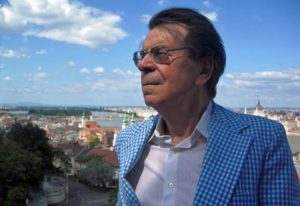
A happy childhood was followed by a disastrous period for Benko, and one for the whole world: World War 2. About these dark pages in history, he gave the following account himself:
“When I was 16 they took me to the army. I was made to dig ditches somewhere on the Austrian border. I deserted and managed to return home only to find that my father and brother were no longer there. They were shipped to Russia as “prisoners of war.” Prisoners of war!? They were not even soldiers! Those were the times then. One could end up as a prisoner for any reason at any time. They never saw my mother again, because during their captivity in Russia, she died. My father was let out after a year and a half and soon afterwards he defected to the USA.”
After the war ended, it took Benko only a few years to become one of the strongest chess players in his country and in 1948, at age 20, he won his first Hungarian championship. In the late 1940s and early 50s, Benko was second in his country only to Laszlo Szabo. Meanwhile, he was working as a bookkeeper.
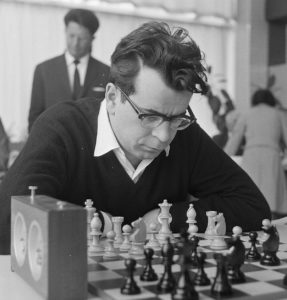
Then another bad period began for Benko (“My fall from grace,” as he calls it in his 2003 autobiography Pal Benko: My Life, Games, and Compositions). After playing a tournament in Goerlitz, East Germany in March 1952, he tried to defect to the American embassy in West Berlin, but was arrested ( Yes! You read that right) by police, brought to Hungary and interrogated for three weeks. The authorities thought he was an American spy.
“During this time I was kept alone in a prison cell-there was no contact with anyone other than the people questioning me,” Benko wrote. “Sleep wasn’t allowed and bright lights were constantly in my face.”
Eventually he was sent to a concentration camp with very bad conditions, with hardly any food or daylight, for a year and a half. He saw many other prisoners succumb to starvation. While his family thought he had escaped to the U.S., Benko only got out of the camp after the Soviet leader Joseph Stalin died in 1953, and Hungarian president Imre Nagy gave amnesty to most prisoners.
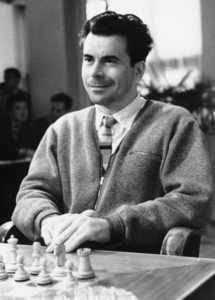
For a while, Benko was seen as a “black sheep” and was denied participation at several international tournaments. Five years after his release, he could finally initiate his desired emigration to the United States. He defected after having played the World Student Team Championship in Reykjavik, Iceland, where he received a visa at the American embassy.
Later, many thought he had been one of the many Hungarians who had fled the country after the Soviets’ harsh response to the 1956 revolution. However, because the quota for Hungarian refugees in the U.S. had reached its limit of 30,000, Benko ended up entering the desired country with his French passport, having been born in France.
As a result, he never received the benefits that other refugees from his country received, but due to the earlier hardships he appreciated the small pleasures of life. He wrote: “Everything had a wonderful glow to it, the food tasted like nectar and women seemed so beautiful that I had to date as many as possible.”
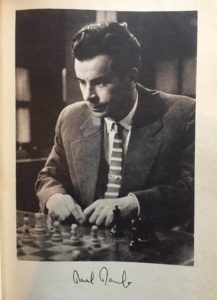
Having studied economics back in Hungary, Benko initially worked at the New York Stock Exchange. When he qualified for the 1959 Candidates’ Tournament, a year after FIDE had awarded him the grandmaster title, he decided to become a chess professional.
He finished in last place in 1959 (the tournament was won by Mikhail Tal, who ended up beating Mikhail Botvinnik the next year) but did beat former world champion Vasily Smyslov in a game.
In the 1968 U.S. Championship, Benko won a beautiful miniature against IA Horowitz. This game is a must-see.
By finishing in third place at the 1969 U.S. championship, Benko qualified for the 1970 Interzonal tournament in Palma de Mallorca together with Samuel Reshevsky and William Addison. Fischer had chosen not to play in this national championship, which functioned as a zonal event and therefore was the first step into the 1969-1972 world championship cycle. Claiming that the tournament was “too short,” Fischer effectively withdrew from the cycle.
Benko felt confident that Fischer had a good shot at winning the title (as opposed to himself), so he decided to give up his place in the Interzonal. This made it possible for Fischer to participate in Palma de Mallorca, win there with a 3.5-point margin and eventually become world champion in 1972.
Benko and Fischer hadn’t always been on the best of terms. Playing in a tournament in 1962 in the Caribbean, they squabbled one night and got into a fistfight– “the first fistfight ever recorded by two grandmasters,” Frank Brady wrote in his Fischer biography, Endgame. But they reconciled and stayed friends to the end. “Pal felt that Bobby could change the chess world-which Bobby did-and if Bobby became world champion, that would benefit the whole game,” Susan Polgar, a friend of both men and a former women’s world chess champion, told me. “His own personal interest was secondary to the bigger picture.”
Reacting to suggestions of having been paid to give up his spot, Benko wrote in July 1975 in Chess Life & Review:
The idea for me to step down and give Fischer my place was my own; it was made voluntarily and without pressure from anyone. I felt that as one of the world’s strongest players he should have the right to participate in that critical Interzonal. The U.S. Chess Federation had always treated me well; by my action I hoped to show my gratitude. (The USCF had given me the opportunity to qualify for the Interzonal in Amsterdam in 1964 by arranging a match between Bisguier, who had qualified, and me, who had not. And there have been many other things for which I am grateful to the USCF.) The figure $2,000 is sometimes mentioned as the price I was paid for stepping down. Actually, that fee was paid, but it was for my services as second to Reshevsky and Addison at that tournament – and it is the same amount I would have received as an appearance fee had I actually played. The only condition I asked for stepping down was for Fischer to agree not to withdraw from the Interzonal or the ensuing matches should he qualify for them – and he fulfilled this condition.
During his career, Benko had become known as the “King of Opens” as he won the U.S. Open a record eight times in the years 1961, 1964, 1965, 1966, 1967, 1969, 1974 and 1975. He played in seven Olympiads. First, scoring 10/15 on board three (behind the aforementioned Szabo and Gedeon Barcza), he helped Hungary to team bronze in 1956 in Moscow. He played six times for the U.S. in the years 1962-1972. He won silver for board two in Varna 1962 and team silver in Havana 1966.
With the passing of Benko, an era of American team chess has ended. All players who were active in the 1970 Olympiad are gone now: Benko, Fischer, Reshevsky, Larry Evans, William Lombardy and Edmar Mednis.
Over his career, Benko defeated four world champions: Fischer, Tal, Petrosian, and Smyslov. His score against Fischer was three wins, eight losses and seven draws.
Besides playing 1.g3 successfully (he defeated both Fischer and Tal with it at the 1962 Candidates’-the Tal game was given earlier and the Fischer game is right above this text), Benko’s biggest opening theoretical legacy is, of course, the Benko Gambit: 1.d4 Nf6 2.c4 c5 3.d5 b5.
In Eastern European countries it was known as the Volga Gambit, and at the time Benko himself called 1.d4 Nf6 2.c4 c5 3.d5 b5 the Volga, and 1.d4 Nf6 2.c4 c5 3.d5 b5 4.cxb5 a6 the Benko. These days, the opening is often called Volga-Benko Gambit. The opening became extremely popular and the theory expanded so quickly that the creator himself lost interest in playing it.
“I had created a monster,” he said. “I found it necessary to turn to other openings in the mid-seventies.”
Yochanan Afek, a grandmaster of composition himself since 2015, said Benko was “very special” in the world of endgame studies: “He composed really good studies, but they were game-like studies. The positions were often natural for over-the-board players and solvers, but by no means they were easy ones. It’s also interesting to note that, compared to other composers, he was pretty accurate in composing. He made studies for most of his life without engines, and relatively few were ‘cooked’. He was a great analyst, and won many first prizes, especially in Hungarian study tournaments.” Afek provided three of his favorite Benko studies which are given down below.
Benko was a prolific writer. His column in Chess Life ran just over 46 years, from April 1967 through December 2013. In 2013, he chose to retire, but continued contributing regularly after that.
“He was amazingly easy to work with,” former Chess Life editor, now Senior Director of Strategic Communication Dan Lucas said. “There was no ‘legend diva’ about him. He always submitted his column on time and was always happy to see his material in print. If this class-C editor didn’t understand something and questioned him about it, he simply reworded the material until I could understand it. Nor did he care what my playing credentials (or lack thereof) were-he simply accepted me for what I was-the person hired by US Chess to edit his column. He was a complete professional.”
American GM Lev Alburt, who defected from the Soviet Union in 1979, wrote: “I knew Pal for many years. In the 1980s we played a couple of games, and at some occasions we analyzed together his/our gambit. He was a self confident, well adjusted to the world man. Unlike many other players he didn’t complain being denied the opportunity to reach the greater heights, he wasn’t bitter: even as he missed several of his best years in jail, and then in a larger jail in communist Hungary. Because of our first-hand knowledge of communism, we had similar views on many subjects. Pal was a great guy; I-and many others, and chess, certainly-will miss him.”
Here are some tweets from other people about him:-
The first ever opening I took up with any level of seriousness was the Benko Gambit. Today is a sad day. Nonetheless, Pal’s legacy will live on. Nobody in the history of the game demonstrated the inextricable link between art and chess quite like he did. RIP
— Lawrence Trent (@LawrenceTrentIM) August 26, 2019
Lawrence Trent himself wrote that, “The first ever opening I took up with any level of seriousness was the Benko Gambit. Today is a sad day. Nonetheless, Pal’s legacy will live on. Nobody in the history of the game demonstrated the inextricable link between art and chess quite like he did. RIP”.
Pal Benko! 😢 So sad when the legend dies. Thank you for everything, I have learned by studying your games.
— Teymur Rajabov (@rajachess) August 26, 2019
Teymur Rajabov, a very strong chess player, himself writes, “Pal Benko! So sad when the legend dies. Thank you for everything, I have learned by studying your games.”
RIP Pal Benko, an original chess mind who always strove to create original things on the chessboard, especially his countless brilliant compositions. https://t.co/Vl89ej2OoQ
— Garry Kasparov (@Kasparov63) August 26, 2019
Garry Kasparov, one of the greatest players the chess world has ever seen, has also shed some light on this topic. He mentions that, “RIP Pal Benko, an original chess mind who always strove to create original things on the chessboard, especially his countless brilliant compositions”.
Truly speaking, his contributions will be forever indebted to the chess world and I hope I have done justice by writing this article.

If you are interested in playing the benko gambit. The following two videos (not from my channel. 1st is from Saint Louis Chess Club and the 2nd is from thechesswebsite) will assist you in your journey. Click here if you want to see the Benko Gambit covered from the Saint Louis Chess Club and here if you want to see the video covered by thechesswebsite.
Happy Learning,
Yash Mehta




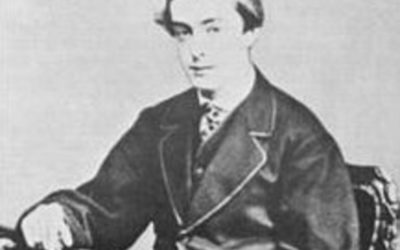
0 Comments